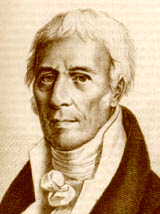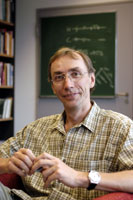Mon 18 Dec 2006
No Time for Platonia
Posted by Marcus under Book Review, Religion, Science, The Universe, Time
No Comments
Julian Barbour has written a clear and groundbreaking manifesto in The End of Time that states what may be the most profound insight since Aristotle. Time, according to Barbour, the reference by which all of Newtonian physics is measured is merely an illusion!
Newton proposed a universe of physics which contained a fixed reference coordinate system upon which physical existence plays out. The cartesian or polar playing field contains three fixed dimensions of space and one of time. In Newtonian physics, the world simply operates according to the rules of motion which he so clearly identified.
While most experiments conformed to Newton’s picture of physical reality, there were some experiments, like black body radiation, that did not work out according to plan. Just as Newton corrected and extended Aristotle’s views, Einstein, Bohr and the others corrected and extended Newton’s mechanics with quantum mechanics.
Just as Newton’s view ran into experimental problems, quantum theory runs into problems when trying to incorporate gravity into a grand theory. Barbour painstakingly develops his theory, and a method of visualizing the basic concepts that permit his theory to be understood. (more…)

 Jean-Baptiste Lamarck
Jean-Baptiste Lamarck Well, this same fellow also did a similar experiment with rats! He developed two colonies; one about as friendly as you can imagine, and the other colony a clan of uber-rodents that are more vicious than those in
Well, this same fellow also did a similar experiment with rats! He developed two colonies; one about as friendly as you can imagine, and the other colony a clan of uber-rodents that are more vicious than those in  Decoding genomes is getting cheaper.
Decoding genomes is getting cheaper. 